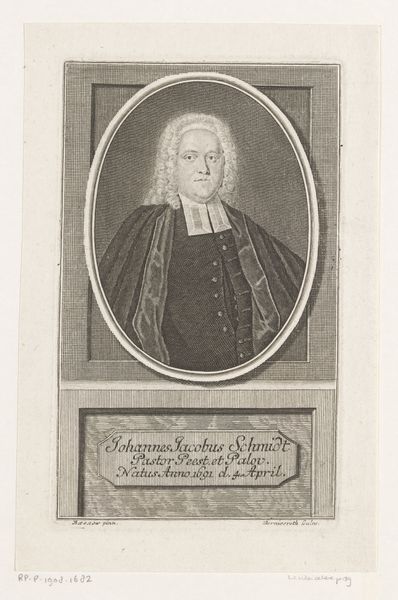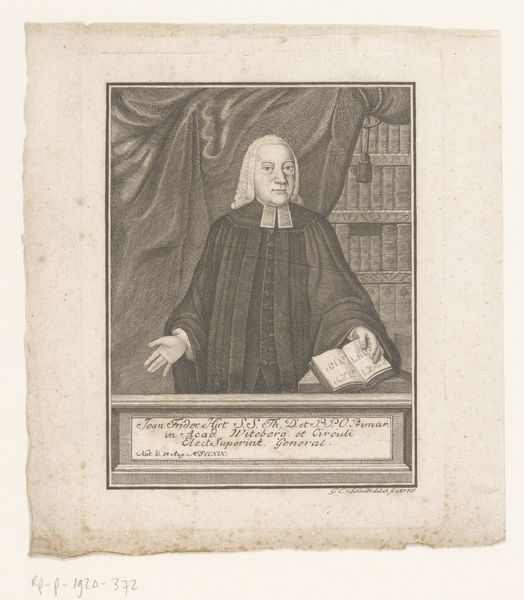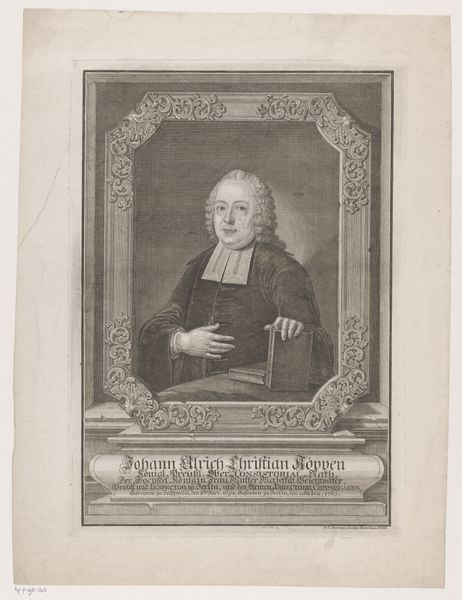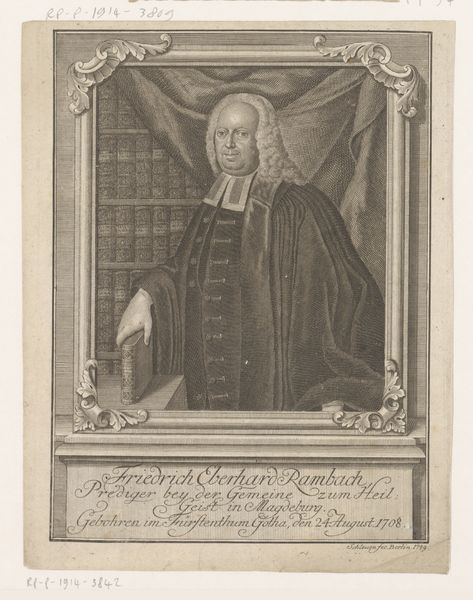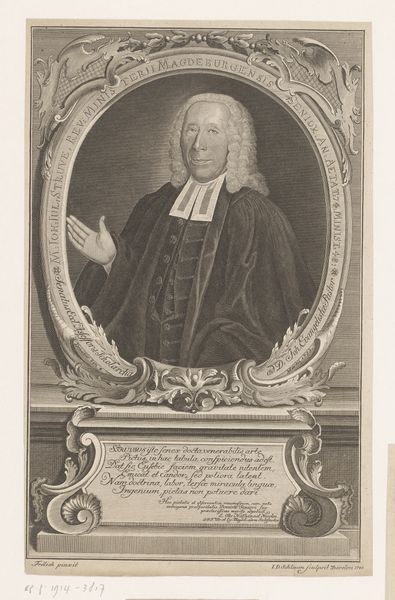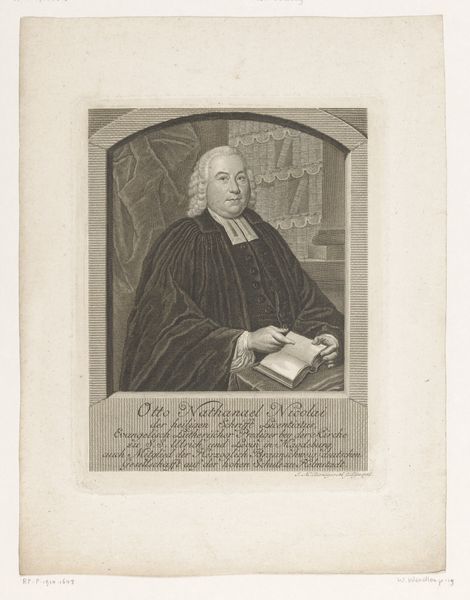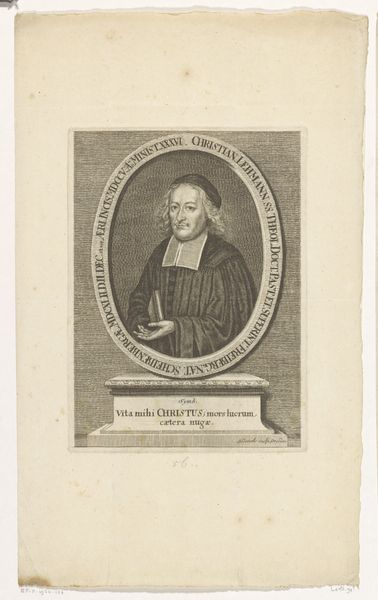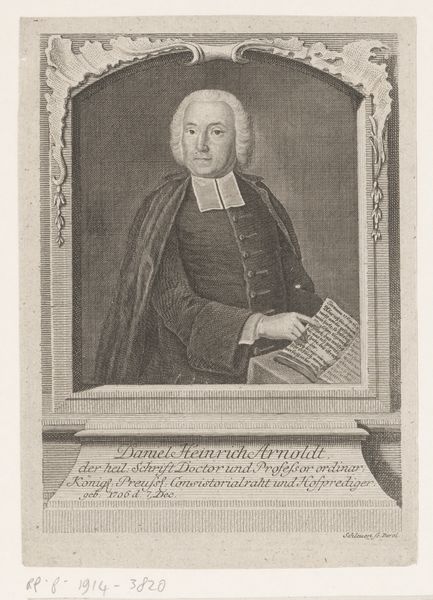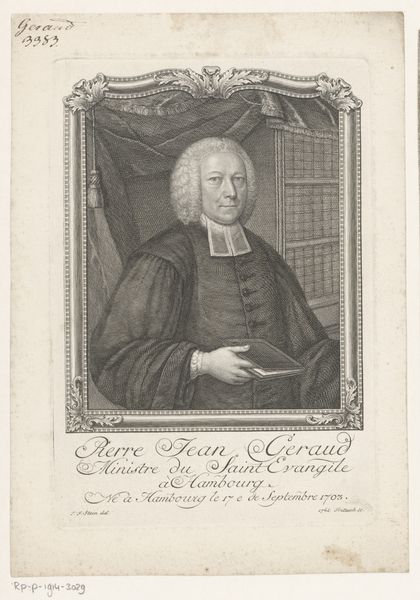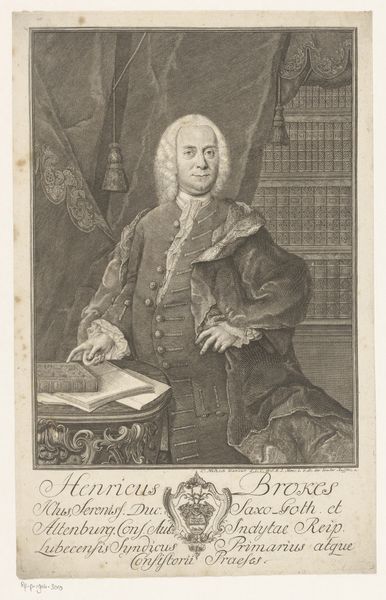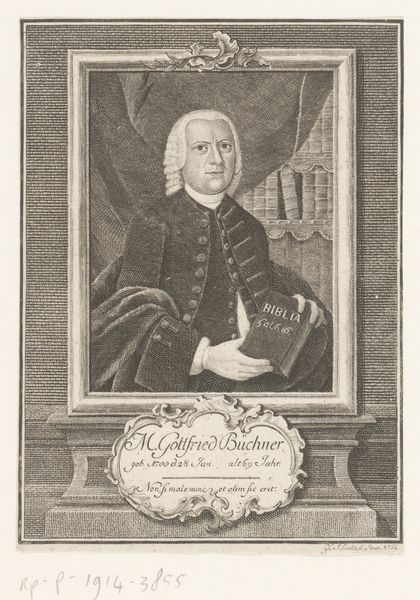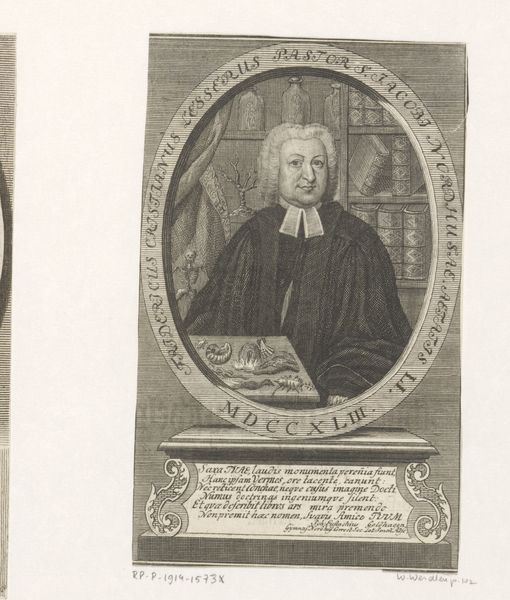
engraving
#
baroque
#
old engraving style
#
history-painting
#
engraving
Dimensions: height 343 mm, width 240 mm
Copyright: Rijks Museum: Open Domain
Editor: Here we have "Portret van Georg Christian Haine," an engraving by Johann Ernst Gericke, dating from sometime between 1744 and 1758. It strikes me as quite formal, even severe. The subject is framed and adorned with symbolic books; I'm wondering, what’s your read on this piece? Curator: Well, it's interesting that you pick up on the formality. It reflects a very specific construction of masculinity and power during that era. How does the subject’s clothing contribute to your understanding? Think about class, status, and the role of the church at the time. Editor: I see the clerical collar and the formal robe now...and of course the wig. So it speaks to status, authority... the established church, certainly. How does the medium, engraving, itself relate to that? Curator: Precisely! Engraving was a method of mass production but also precision and permanence. The choice to immortalize Haine in this way – who gets remembered, and why? – reflects power dynamics. Does it make you think of similar representations of power in our time? Editor: Yes, politicians, CEOs, maybe even some contemporary clergy still perform status similarly, even through photographs. The staging seems so crucial. Curator: Indeed. Think about it, art becomes a powerful tool not just to depict the world but to shape how we see it, how we understand social roles. This engraving served as a political statement as much as it was a portrait. Editor: That's fascinating. It changes my perspective completely. Thanks! Curator: And thank you. Analyzing historical works and relating their meanings to today's social dynamics is truly vital.
Comments
No comments
Be the first to comment and join the conversation on the ultimate creative platform.
